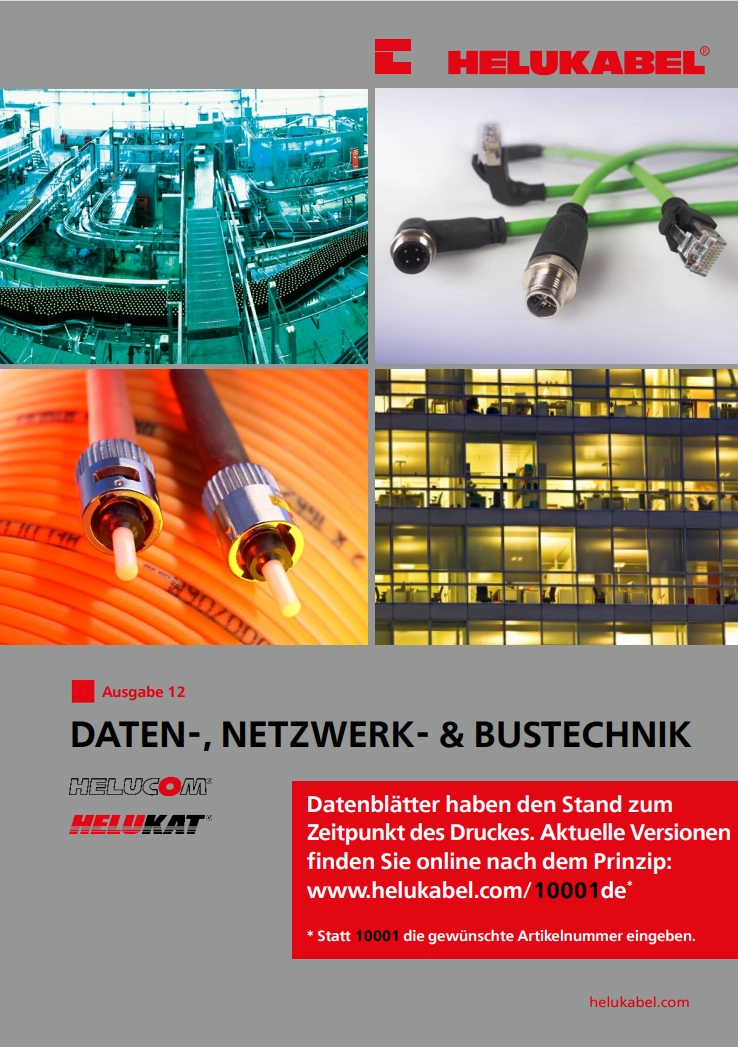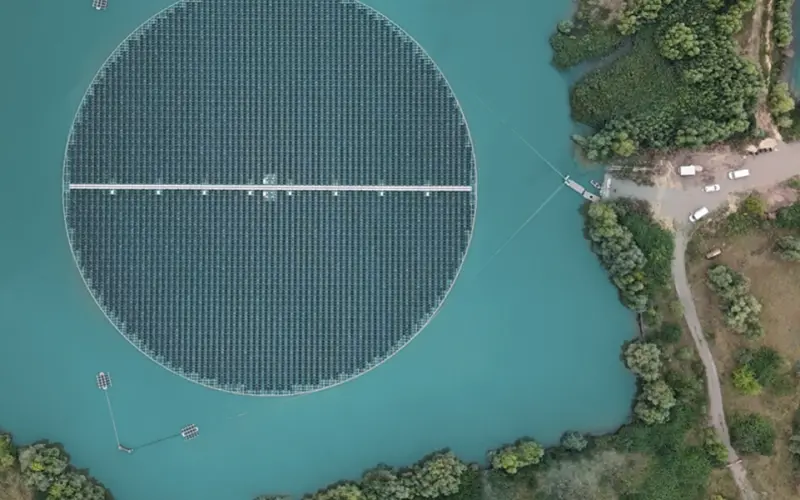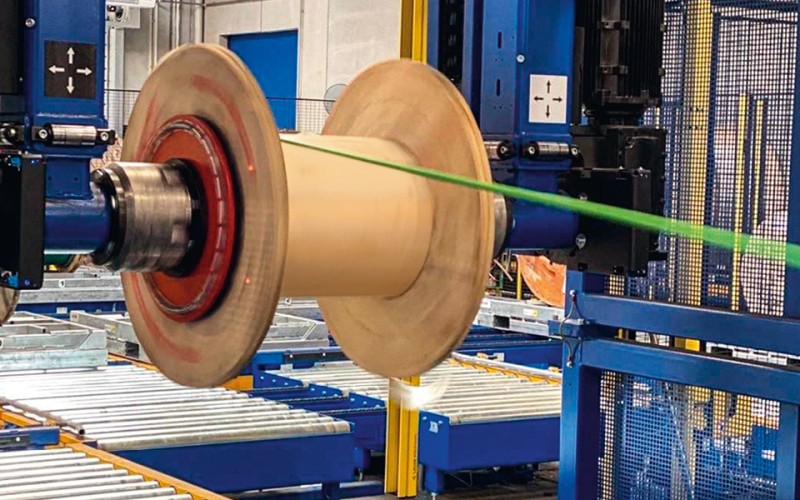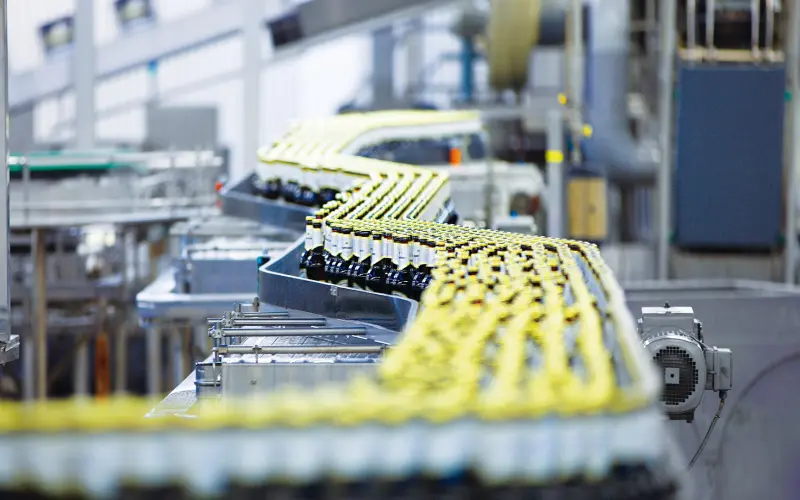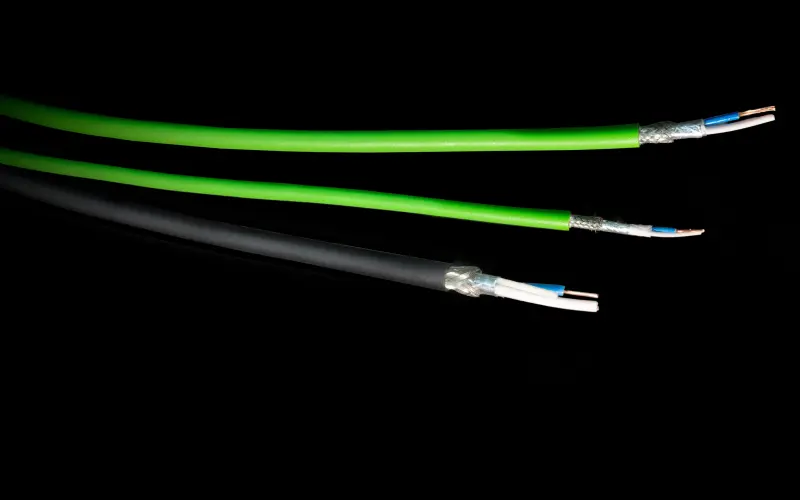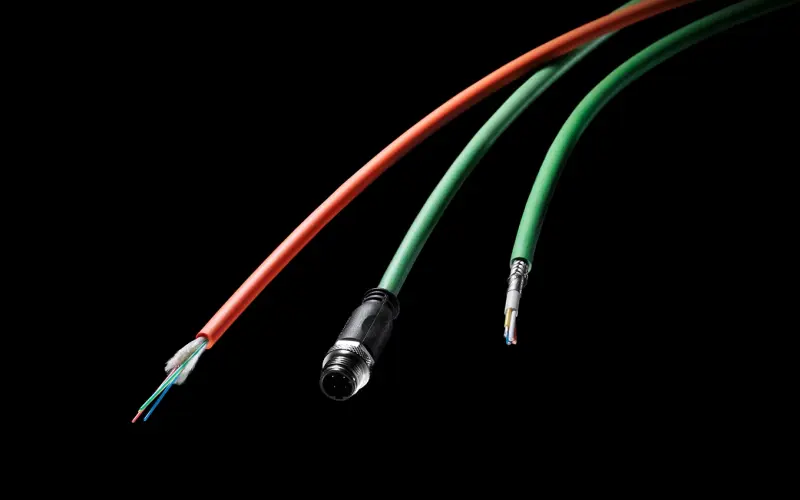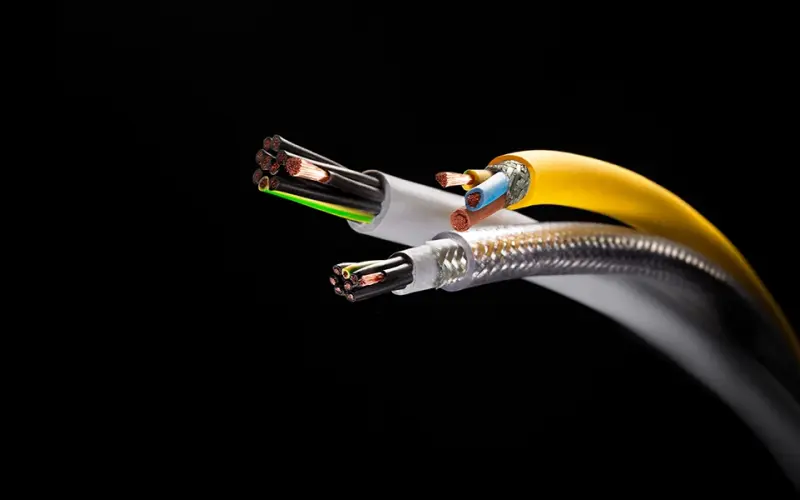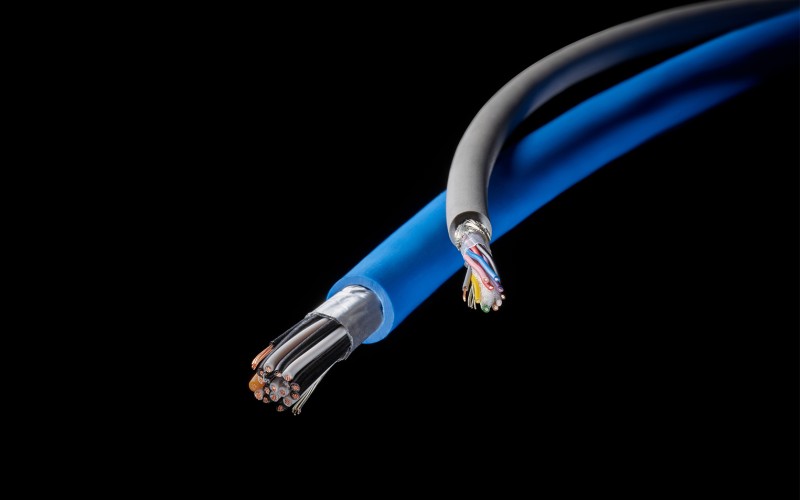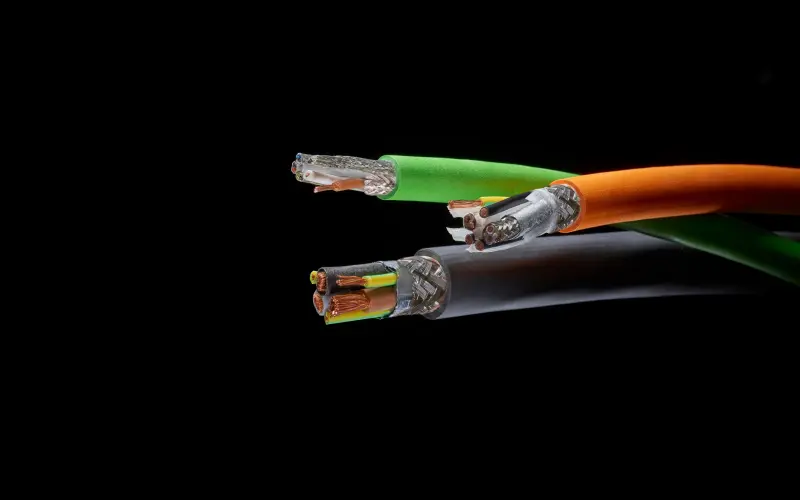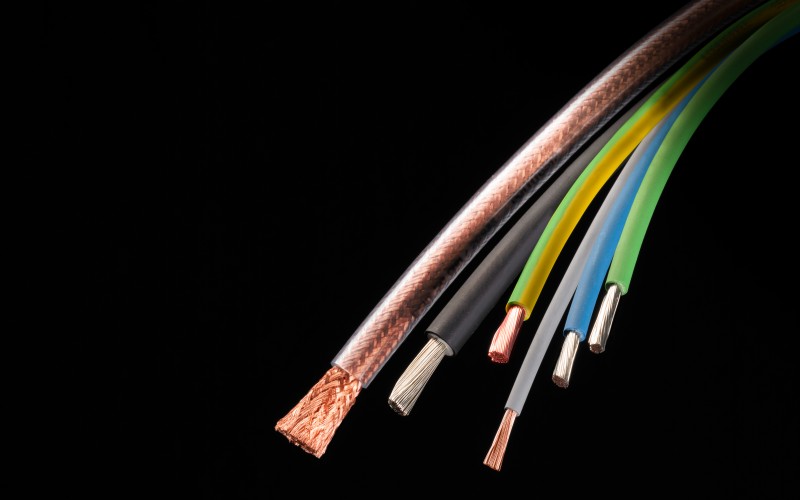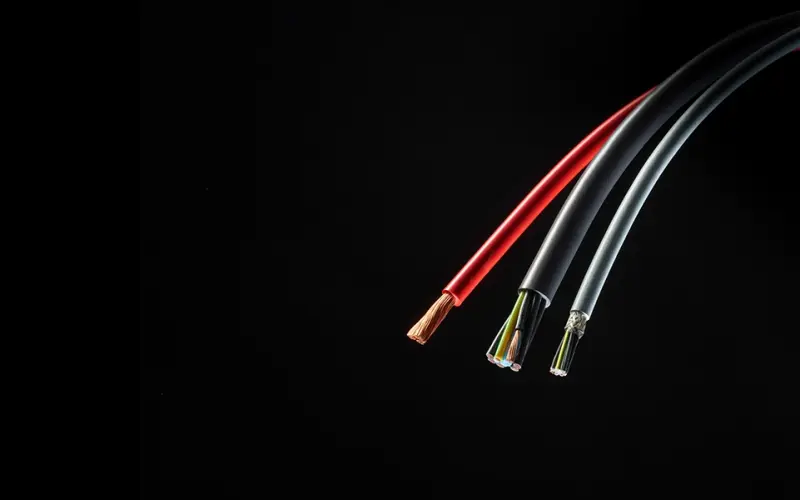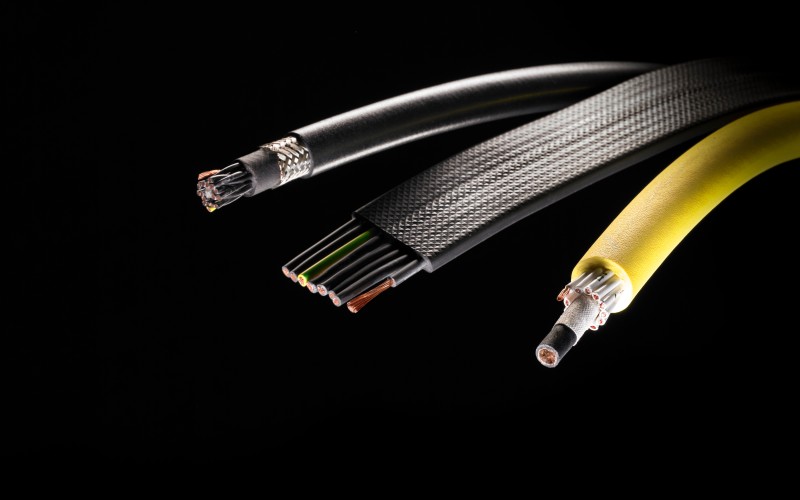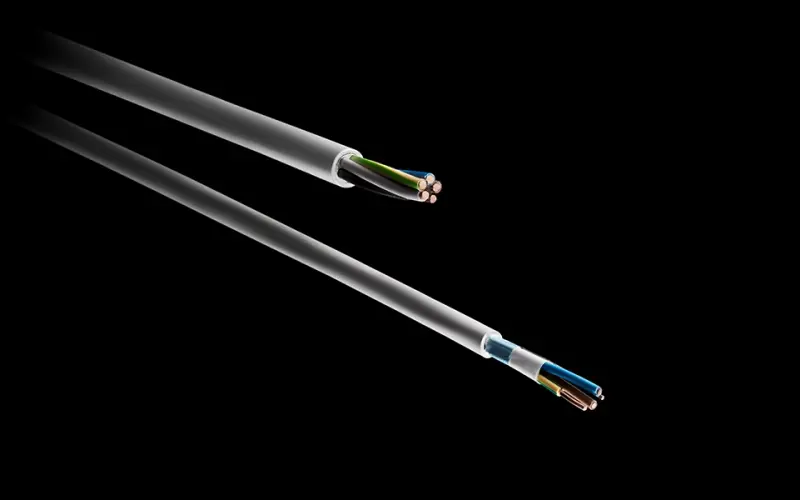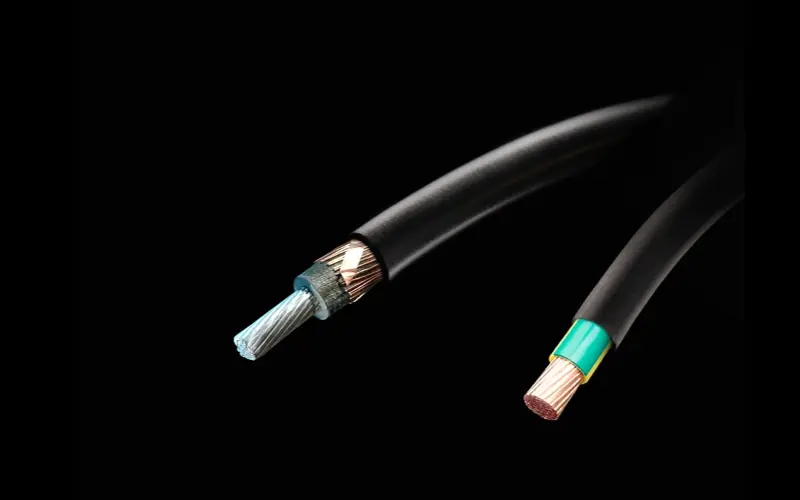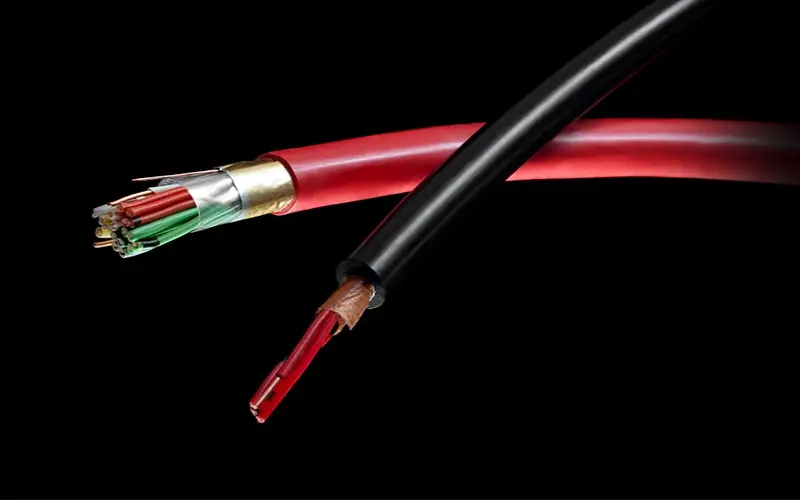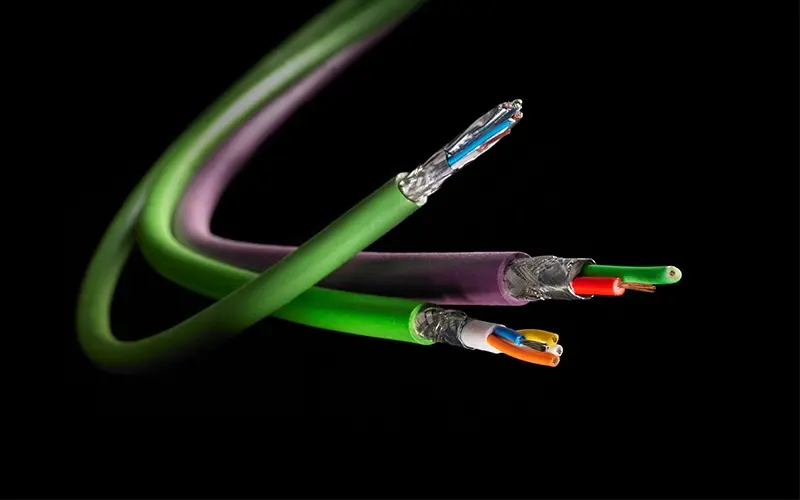Fibre-Optic Cables: The Future of Data Transmission
What are fibre-optic cables and what makes them so invaluable?
Fibre-optic cables transmit data at up to gigabit speeds using pulses of light which are carried by glass and plastic fibres. They utilise optical signals instead of electric currents and function across large distances without attenuation. Electromagnetic fields have no effect on transmission, either. This makes fibre-optic cables the first choice for critical applications.
Fibre-optic advantages at a glance
- Undisrupted transmission: Fibre-optic cables are immune to electromagnetic fields and are capable of lossless data transmission across large distances.
- High bandwidths: Fibre-optic cables enable gigabytes of data to be transmitted in real time and even fulfil future signal rates requirements.
- Longterm investment: Fibre-optic cables remain reliable for decades and reduce maintenance costs thanks to their robust construction.
11Y_M80382_PF_any_large.webp)
Applications: Where fibre-optic cables really shine
Industry
Modern production plants require reliable data transmission. Indoor fibre-optic cables network machines, sensors, and control units together. Signals remain stable even over long transmission distances. Multi-mode cables are suited for medium distances, while single-mode cables cover long distances without issue. For moving applications, such as in drag chains, there are special designs that satisfy the high mechanical demands of machines and plants. Special sheath materials also make them resistant to oils, greases, lubricants, and other chemicals.
Industrial Cable GOF • Industrial Cable POF • Breakout Cable Profibus/PROFInet • Industrial Cable HCS
Infrastructure
Data centres, telecommunications, and energy supply systems rely on outdoor fibre-optic cables that connect buildings and neighbourhoods. Together, they form the backbone of the internet and enable fast broadband connections. Fibre-optic cables are what make growth possible.
Indoor Cables • Universal Cables • Outdoor Cables • Aerial Cables • Mobile Cables
Other industries
Alongside telecommunications, medical applications also use fibre optics for endoscopes, microscopes, and imaging techniques. Fibre-optic cables are utilised in sensors, spectrometers, and other optical instruments. Robust connectors for fibre-optic cables are used in defence and security technology. Fibre-optic measurement methods also use optical fibres as sensors to gauge temperatures or to monitor structures for the formation of cracks in bridges or for locating leaks in dams, for example.
Fibre-optics from HELUKABEL: Your solution for professional applications
We have a comprehensive range of fibre-optic cables for every need. Our fibre-optic cables are a perfect combination of the highest quality and technical precision. We assemble fibre-optic plugs according to your specifications in order to deliver complete system solutions. Whether multi-mode cables for local networks or single-mode cables for wide-area networks, we will find the perfect solution for you. We supply both indoor and outdoor fibre-optic cables for a wide range of applications. As a systems supplier, our thinking goes beyond just the cable itself— we develop custom solutions according to your specific needs. From planning to installation, we will support you through every step of your project.
What challenges are you facing with data transmission? Let our experts support you in finding the perfect solution. Contact us for a personalised consultation!
FAQ
No, however fibre optic and glass fibre feature similar technology. While both terms refer to the use of fibres made of glass, glass fibre is often referring to a material used to reinforce plastics or insulate buildings and electrical cables. Fibre optic refers to the optical-fibre core at the centre of a cable.
Multi-mode cables have a thicker core and can carry multiple modes of light at the same time. They are suited for short and medium distances up to approx. 550 metres. Single-mode cables contain a smaller core and carry only a single mode of light (wavelength). This allows them to transmit across greater distances, several kilometres, without experiencing signal loss.
A multi-mode, fibre-optic patch cable can typically cover distances of up to 300 metres with 10-gigabit Ethernet. At lower transmission rates, distances of up to 550 metres are possible. The exact range depends on the quality of the fibre and the wavelength being used.
A fibre-optic patch panel is a passive device that provides a connection point for fibre-optic cables. It serves as a centralised hub where multiple fibre-optic cables can be systematically organised and managed and allows for different devices to be flexibly connected to one another.

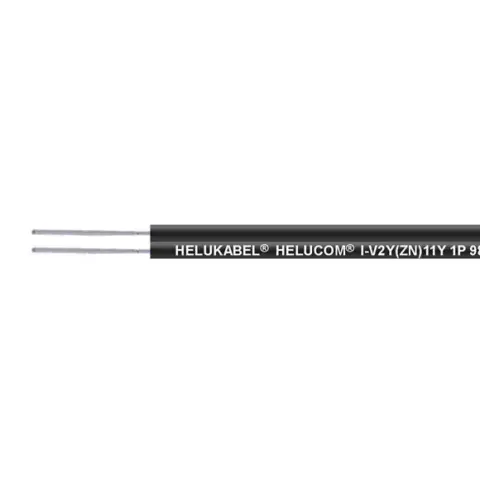
11Y_M80382_PF_echo_spot.webp)

